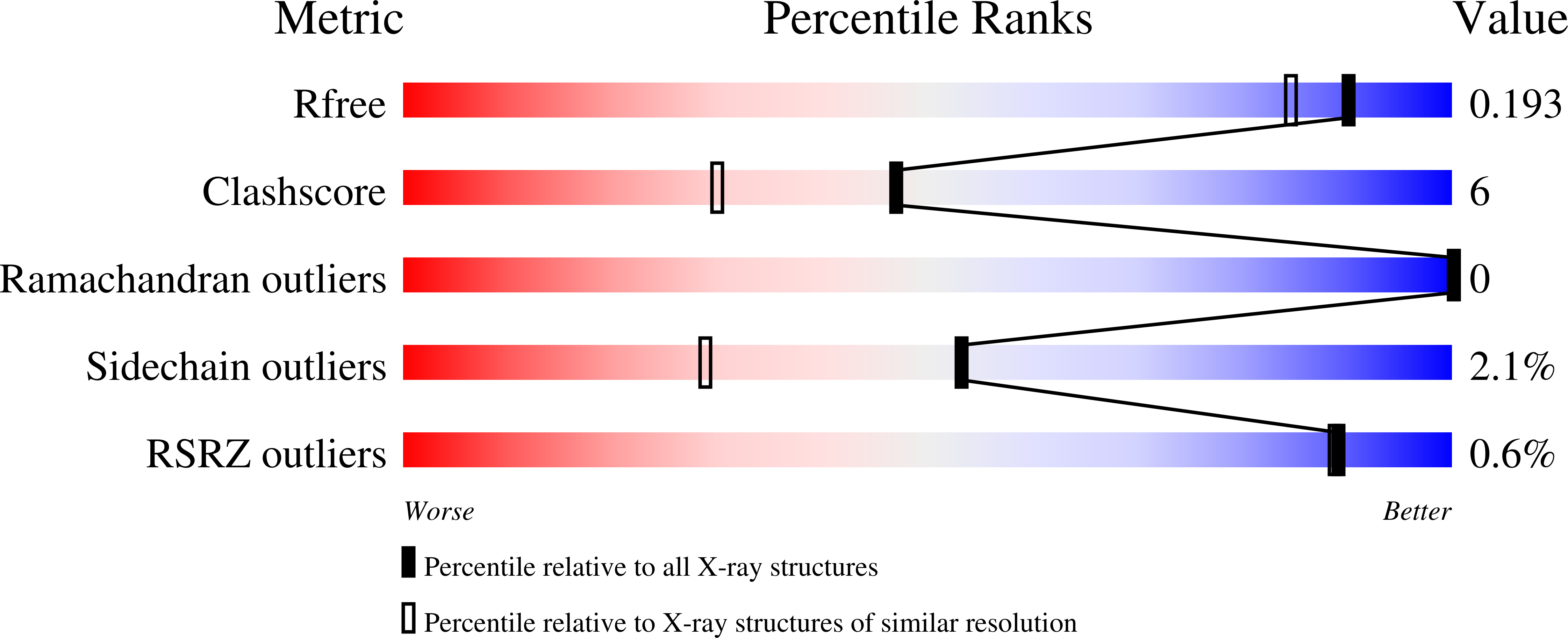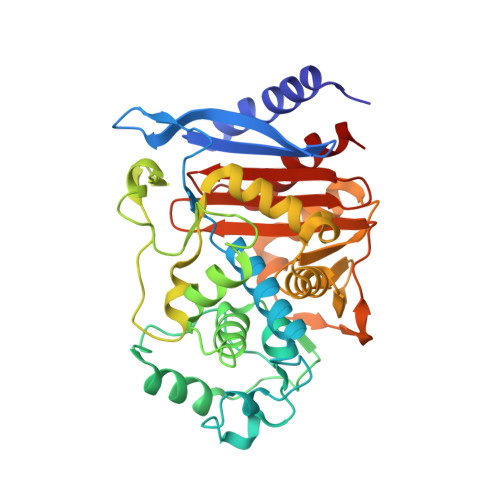Inhibition of class C beta-lactamases: structure of a reaction intermediate with a cephem sulfone.
Crichlow, G.V., Nukaga, M., Doppalapudi, V.R., Buynak, J.D., Knox, J.R.(2001) Biochemistry 40: 6233-6239
- PubMed: 11371184
- DOI: https://doi.org/10.1021/bi010131s
- Primary Citation of Related Structures:
1GA0 - PubMed Abstract:
The crystallographic structure of the Enterobacter cloacae GC1 extended-spectrum class C beta-lactamase, inhibited by a new 7-alkylidenecephalosporin sulfone, has been determined by X-ray diffraction at 100 K to a resolution of 1.6 A. The crystal structure was solved by molecular replacement using the unliganded structure [Crichlow et al. (1999) Biochemistry 38, 10256-10261] and refined to a crystallographic R-factor equal to 0.183 (R(free) 0.208). Cryoquenching of the reaction of the sulfone with the enzyme produced an intermediate that is covalently bound via Ser64. After acylation of the beta-lactam ring, the dihydrothiazine dioxide ring opened with departure of the sulfinate. Nucleophilic attack of a side chain pyridine nitrogen atom on the C6 atom of the resultant imine yielded a bicyclic aromatic system which helps to stabilize the acyl enzyme to hydrolysis. A structural assist to this resonance stabilization is the positioning of the anionic sulfinate group between the probable catalytic base (Tyr150) and the acyl ester bond so as to block the approach of a potentially deacylating water molecule. Comparison of the liganded and unliganded protein structures showed that a major movement (up to 7 A) and refolding of part of the Omega-loop (215-224) accompanies the binding of the inhibitor. This conformational flexibility in the Omega-loop may form the basis of an extended-spectrum activity of class C beta-lactamases against modern cephalosporins.
Organizational Affiliation:
Department of Molecular and Cell Biology, The University of Connecticut, Storrs, Connecticut 06269-3125, USA.

















